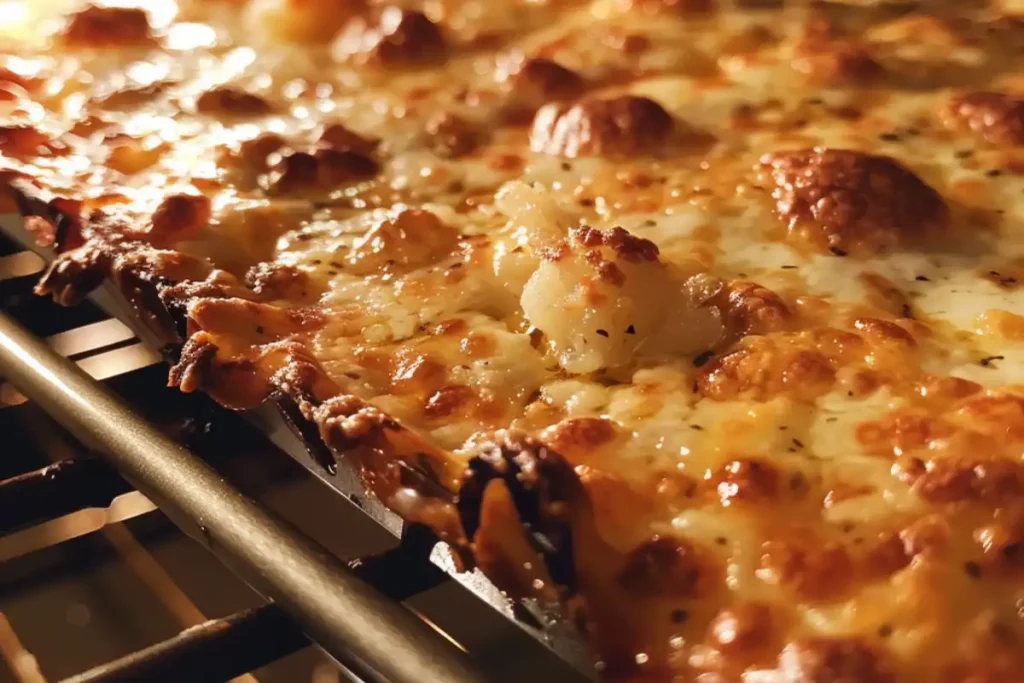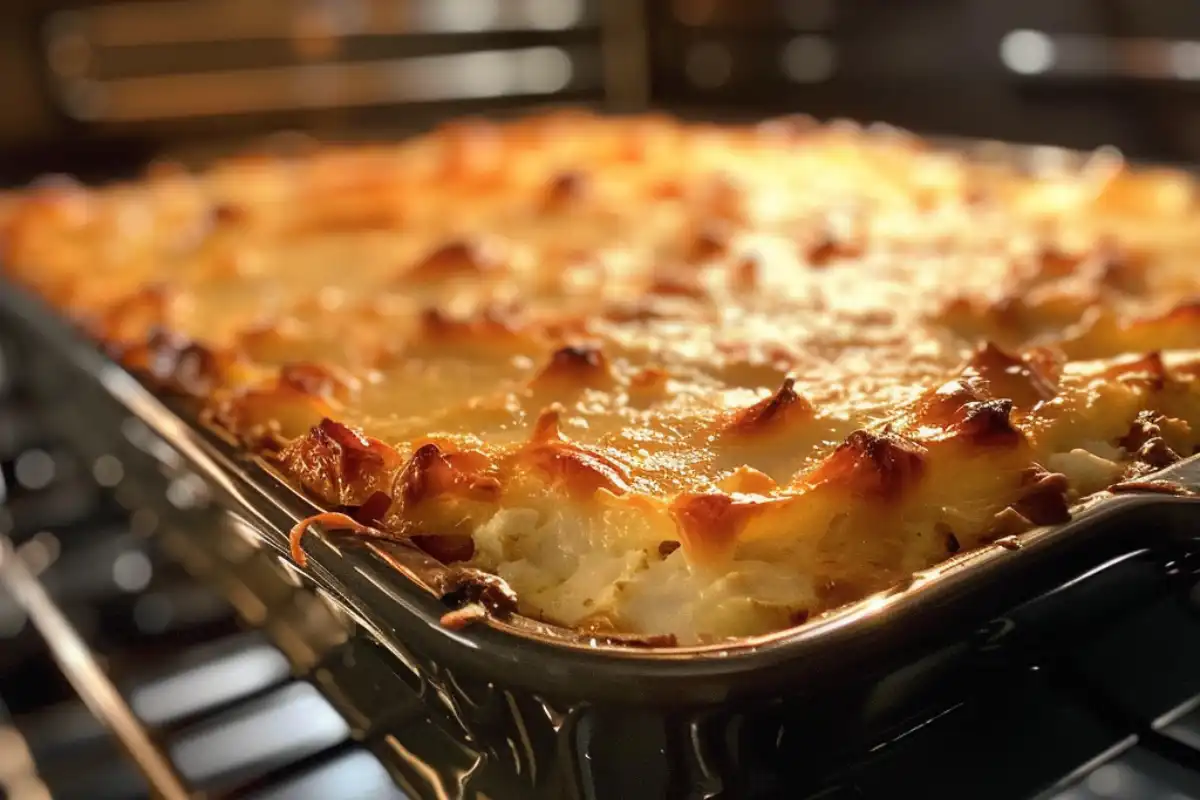Cottage cheese has a unique texture and flavor that lends itself well to a variety of dishes. While it’s often used as a creamy base in savory recipes like lasagna or casseroles, many home cooks wonder: Does cottage cheese brown in the oven? Unlike cheeses such as mozzarella or cheddar, cottage cheese behaves differently under heat, making it less likely to develop that golden, crispy top layer.
In this article, we’ll dive into the science of cheese browning, why cottage cheese doesn’t brown easily, and how to achieve the desired browning effect with a few helpful techniques. We’ll also explore delicious recipes where cottage cheese is baked and whether browning is necessary or preferred.
Table of Contents
Cottage Cheese In The Oven

When it comes to baking cheeses, the golden crust that forms is often a sign of perfection. However, cottage cheese doesn’t behave the same way as other cheeses when exposed to heat. The reason for this comes down to its unique composition.
The Science Behind Cheese Browning
Browning in cheese is caused by the Maillard reaction, a chemical reaction between amino acids and reducing sugars that gives baked or grilled foods their distinctive brown color and complex flavor. This reaction is responsible for the beautiful golden crust we see on baked cheese dishes like lasagna, pizza, or au gratin potatoes.
However, not all cheeses are created equal when it comes to browning. Cheeses that brown well, like mozzarella, cheddar, and Parmesan, have the right balance of proteins and fats. These elements, combined with low moisture content, allow the cheese to melt and form a golden crust under high heat.
Cottage cheese, on the other hand, has a much higher moisture content and lower fat content, which prevents it from browning easily. Instead of developing a golden crust, cottage cheese tends to remain soft and watery when baked.
For a more in-depth look at the science behind Maillard reaction browning , check out this guide on Introduction to the Maillard Reaction: The Science of Browning.
Moisture Content in Cottage Cheese
The high moisture content in cottage cheese is one of the main reasons it doesn’t brown easily. This moisture prevents the cheese from drying out and forming a crisp top layer. Instead, cottage cheese remains soft and retains its curd-like texture when exposed to heat.
Other cheeses, such as cheddar or Parmesan, have a lower moisture content and higher fat content, allowing them to dry out and brown in the oven. Cottage cheese’s higher moisture makes it ideal for adding creaminess to dishes like lasagna or casseroles but less suitable for recipes that require a browned crust.
How to Make Cottage Cheese Brown in the Oven

Even though cottage cheese doesn’t brown easily on its own, there are several techniques you can use to achieve a golden crust in your baked dishes.
1. Use the Broiler
One of the easiest ways to encourage browning when baking with cottage cheese is to use your oven’s broiler function. After your dish is fully cooked, switch the oven to broil for the last few minutes. The direct heat from the broiler will help create a golden, bubbly top layer.
✅ Tip: Be careful not to overdo it, as broiling for too long can cause the cottage cheese to become too watery.
2. Combine Cottage Cheese with Browning Cheeses
If you want a browned top layer, try combining cottage cheese with other cheeses that brown more easily. For example, you can sprinkle mozzarella, Parmesan, or cheddar on top of your cottage cheese dish before baking.
This approach works particularly well in layered dishes like lasagna or baked ziti, where the combination of textures enhances the overall flavor.
3. Add a Thin Coating of Oil or Butter
Another way to achieve browning is to brush a thin layer of olive oil or butter on top of your cottage cheese dish before baking. This method helps the top layer achieve a slight golden hue and adds extra flavor.
This step is especially helpful in recipes like Cottage Cheese Chocolate Chip Cookies, where you want the cottage cheese to provide creaminess without adding too much liquid.
Recipes Where Cottage Cheese is Baked but Not Browned

Cottage cheese is often used in recipes where browning isn’t necessary or desirable. In these dishes, cottage cheese’s creamy texture adds moisture and richness without the need for a golden crust.
1. Cottage Cheese Lasagna
Lasagna is one of the most popular dishes that use cottage cheese as a creamy filling. Many recipes use cottage cheese instead of ricotta for a lighter, more textured layer.
2. Cottage Cheese Casseroles
Casseroles showcase cottage cheese beautifully. Home cooks often use it to add creaminess and moisture without needing browning.
3. Cottage Cheese Quiche
Quiches and other egg-based dishes benefit from adding cottage cheese as a creamy, protein-rich filling.
For more tips on using cheese in baked dishes, check out this helpful guide on What’s the best cheese to cook with
Recipes Where Browning with Cottage Cheese is Desired
In some recipes, achieving a browned, crispy top layer is essential. While cottage cheese won’t brown on its own, you can use certain techniques or combine it with other ingredients to achieve the desired effect.
1. Cottage Cheese-Stuffed Peppers
Stuffed peppers often include a mixture of rice, meat, and cheese. To achieve a browned top, add a layer of mozzarella or Parmesan before baking.
2. Cottage Cheese Baked Ziti
In baked ziti, cottage cheese adds moisture and creaminess. To create a golden, bubbly top, add a final layer of mozzarella or Parmesan on top before baking.
For more delicious recipes, check out Churro Cheesecake, a perfect sweet pairing with your cheesy baked dishes. 🍽️🧀
Does cottage cheese brown in the oven?
So, does cottage cheese brown in the oven? Not easily, but by using techniques like broiling, combining with browning cheeses, or brushing it with oil or butter, you can achieve the perfect balance of creamy and crispy textures.
Whether making lasagna, quiche, or stuffed peppers, understanding how cottage cheese behaves under heat will help you get the best results.
FAQs About Does cottage cheese brown in the oven ?
1. Does cottage cheese melt like other cheeses?
- No, cottage cheese doesn’t melt like mozzarella or cheddar.
2. Can I replace ricotta with cottage cheese in baked dishes?
- Yes, but if you prefer a smoother texture, blend the cottage cheese before adding it.
3. does cottage cheese brown in the oven?
- Not easily, but using the broiler, mixing with browning cheeses, or brushing with butter can help.
4. How do I prevent cottage cheese from becoming watery when baked?
- Drain it before use or combine with eggs/flour.


1 thought on “Does Cottage Cheese Brown in the Oven?”